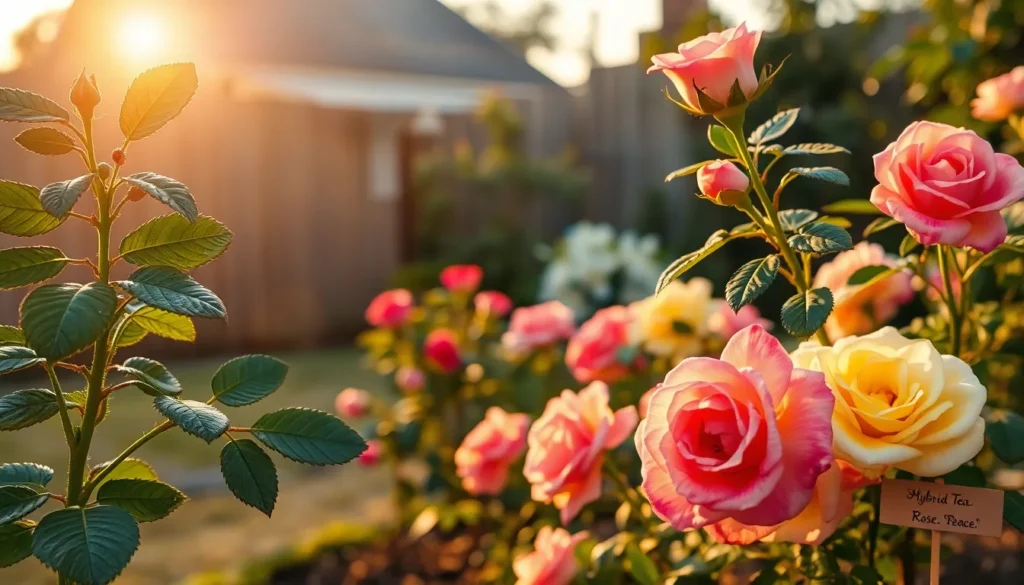There’s something undeniably magical about roses, with their lush blooms and intoxicating fragrance, that captivates gardeners of all levels. Whether you’re a novice just starting to dig your first flower bed or a seasoned gardener looking to refine your rose-growing techniques, planting roses can transform your backyard into a vibrant paradise. This guide is your key to unlocking the secrets of successful rose gardening, offering insights that will help both beginners and experts nurture thriving rose bushes.
Diving into the world of rose gardening means embracing a rewarding hobby that brings beauty and tranquility to your outdoor space. Our collection of practical tips will empower you to cultivate stunning roses that not only enhance your garden’s aesthetic appeal but also offer the therapeutic joy of nurturing life. Get ready to roll up your sleeves and dig into the delight of rose gardening, confident that with our guidance, your backyard will soon be in full, glorious bloom.
Choose a Sunny Planting Spot
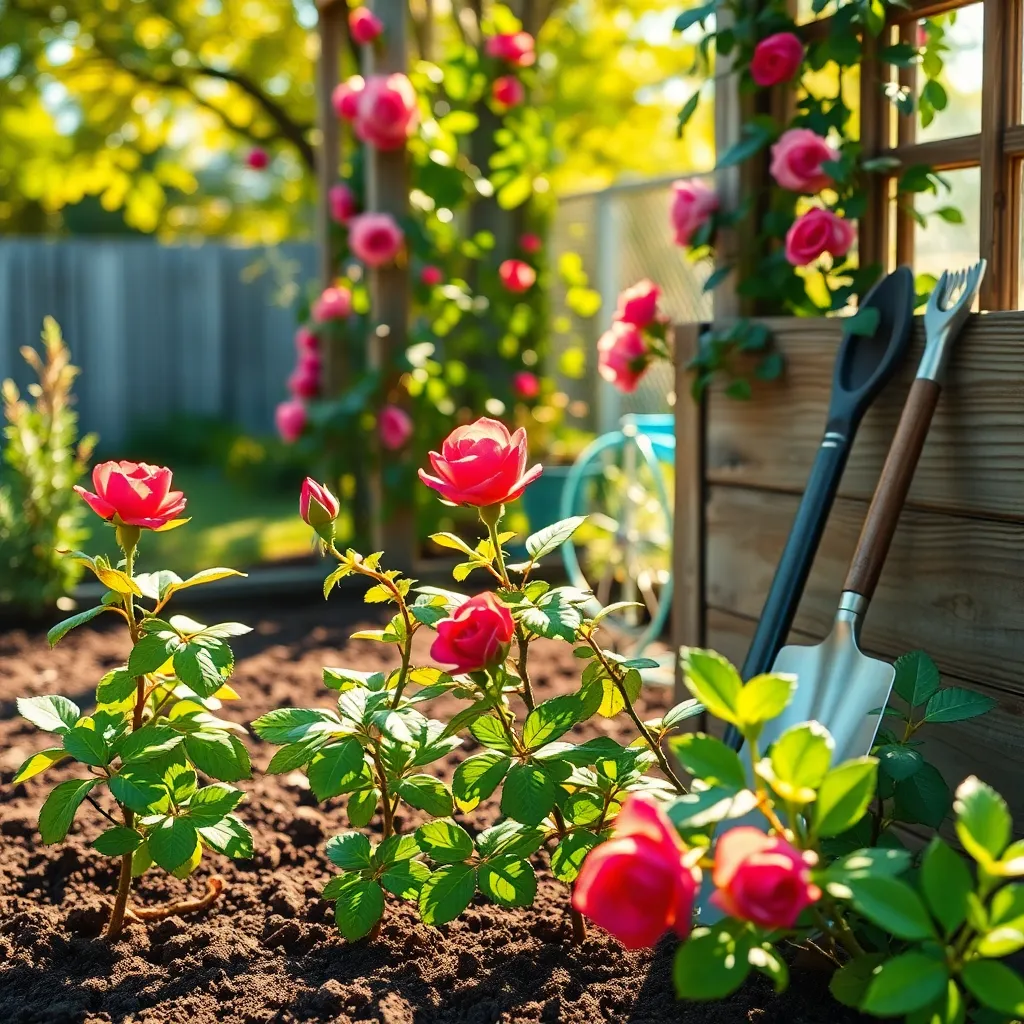
When planting roses, it’s crucial to select a spot where they can thrive with ample sunlight. Roses need at least six to eight hours of full sun each day to produce their best blooms and maintain healthy growth.
Consider the orientation of your garden and any potential obstructions, such as trees or fences, that might block sunlight. Position your roses in an area with good air circulation to help prevent diseases like powdery mildew.
It’s also important to evaluate the soil quality in your chosen planting spot. Roses prefer well-drained loamy soil; if your soil is heavy clay, consider amending it with organic matter to improve drainage.
For those with more experience, experimenting with companion planting can enhance the environment for your roses. Companion plants such as lavender and marigolds can help deter pests and add visual interest to your garden space.
Test and Amend Soil pH

To ensure your roses thrive, it’s crucial to test the soil pH before planting. The optimal soil pH for roses is between 6.0 and 6.8, which is slightly acidic.
You can easily test the soil pH using a home testing kit available at garden centers. Simply follow the kit instructions, which typically involve mixing a soil sample with water and a testing solution.
If the soil pH is too high (alkaline), amend it by incorporating organic matter like peat moss or compost. For soil that is too acidic, adding garden lime can help raise the pH to an ideal level for roses.
Once the appropriate amendments are added, re-test the soil to ensure the desired pH range is achieved. This step is essential to confirm that the conditions are right for your roses before planting.
Space Roses for Air Circulation
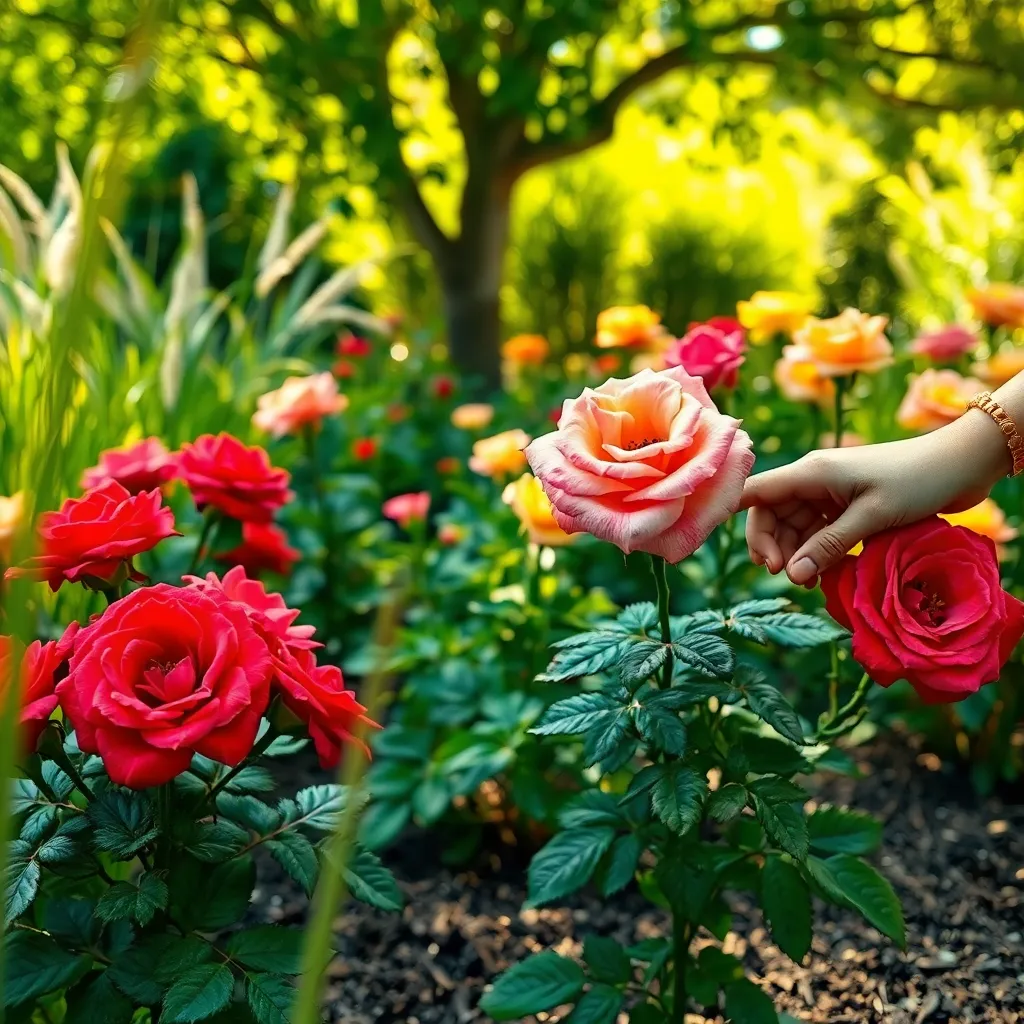
Proper spacing of rose bushes is crucial for ensuring adequate air circulation, which helps prevent fungal diseases like black spot and powdery mildew. Aim to plant rose bushes at least 3 feet apart to allow air to flow freely around each plant, reducing the chance of moisture buildup.
When choosing a location for your roses, consider the mature size of the plant and ensure there’s enough space for growth. Roses thrive in areas where they can receive at least 6 to 8 hours of sunlight daily, which also contributes to better air circulation and healthier foliage.
For gardeners with limited space, consider climbing roses or trellis systems to maximize vertical space while maintaining the necessary air flow. Regular pruning is vital for maintaining good air circulation; remove any dead or crossing branches to open up the center of the plant.
Be mindful of the surrounding landscape when spacing your roses. Avoid planting roses too close to walls or other large plants that could block airflow; this will help keep the foliage dry and reduce disease risk. Keeping the area around your roses free of debris and weeds also promotes better air movement and plant health.
Water Deeply, Avoid Leaves
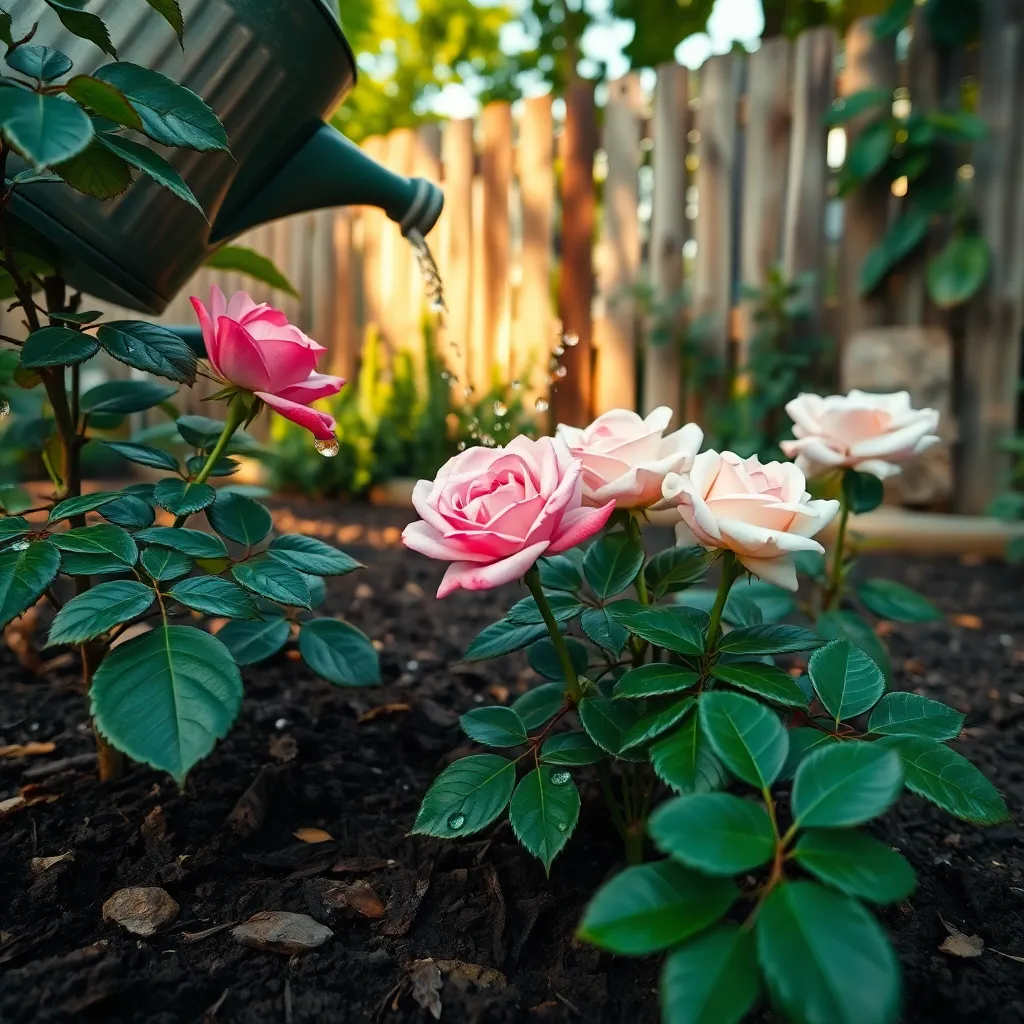
Watering your roses deeply and avoiding their leaves is crucial for healthy growth. This technique encourages roots to grow deeper, making them more resilient to drought conditions and temperature fluctuations.
Begin by watering at the base of the plant, ensuring the soil is saturated at least 6 to 8 inches deep. This depth allows the roots to access moisture consistently, reducing the need for frequent watering.
It’s important to water early in the morning or late in the afternoon. This timing helps reduce evaporation and ensures that the soil retains moisture longer, giving your roses the best chance to absorb the water they need.
Avoid spraying water directly onto the foliage, as wet leaves can lead to fungal diseases like black spot and powdery mildew. Use a soaker hose or a watering can with a narrow spout to target the base of the plant and keep leaves dry.
Experienced gardeners might consider installing a drip irrigation system for a more efficient and consistent watering approach. This setup minimizes water waste and ensures that each rose bush receives the optimal amount of water directly to its roots.
Mulch to Retain Moisture
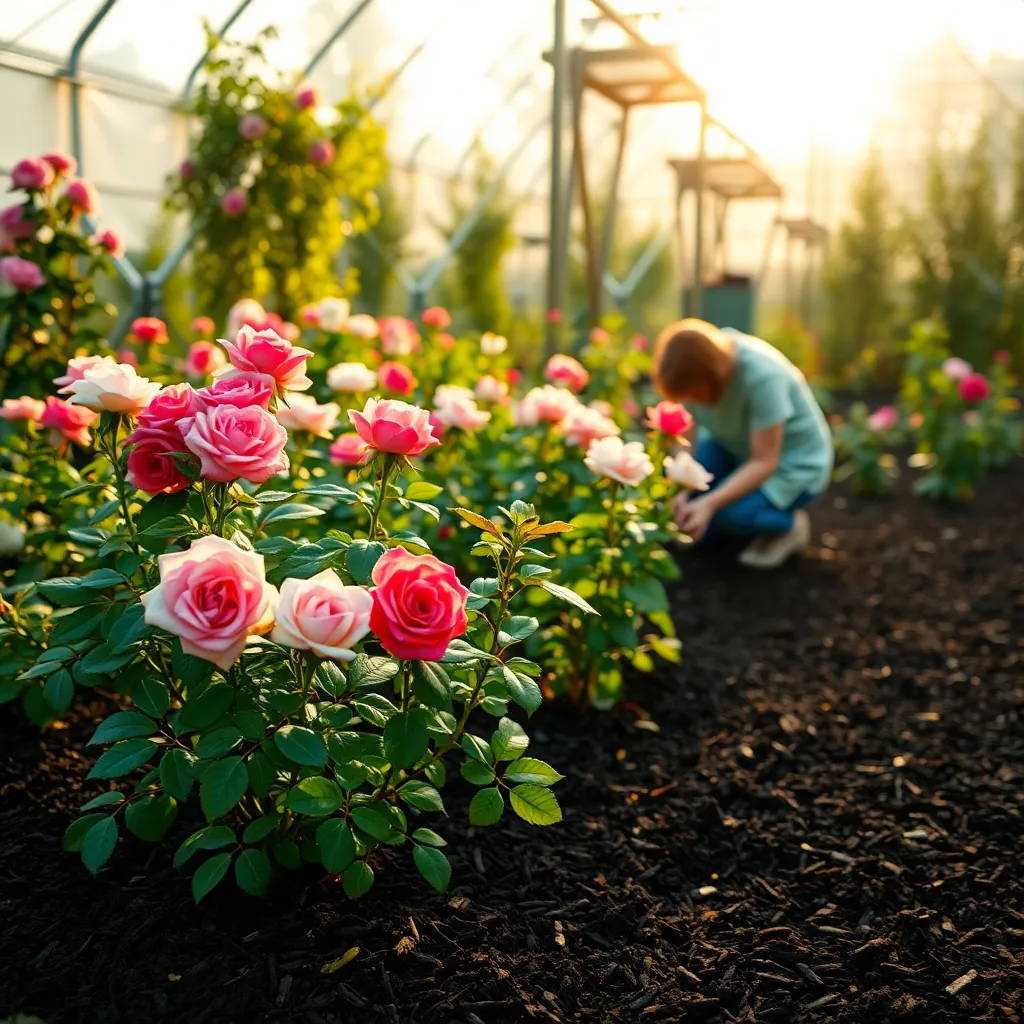
Mulching is a crucial step in rose care that helps to retain soil moisture and regulate temperature. Spread a 2 to 3-inch layer of organic mulch, such as shredded bark or compost, around the base of your rose bushes.
Ensure the mulch is kept a few inches away from the canes to prevent rot. This not only helps in moisture retention but also suppresses weed growth, reducing competition for nutrients.
For beginners, applying mulch is a simple way to improve plant health without much effort. It’s essential to replenish the mulch yearly, especially after the rainy season, to maintain its effectiveness.
Those with more experience might consider using a combination of mulches, like a layer of newspaper under bark, for added moisture retention. Additionally, using mulch can improve soil texture over time as it breaks down and adds organic matter.
Conclusion: Growing Success with These Plants
As we’ve explored the art of planting roses, we’ve uncovered five key relationship concepts that seamlessly translate from the garden to our lives. First, just as soil preparation is crucial, laying a solid foundation of trust and communication nourishes our bonds. Second, the careful selection of rose varieties mirrors the importance of understanding and appreciating each other’s unique qualities. Third, planting with intention highlights the need for setting shared goals and dreams. Fourth, regular watering and care remind us that consistent effort and attention keep relationships thriving. Lastly, protecting our roses from pests and harsh elements teaches us to safeguard our connections from external pressures.
Now is the perfect time to take these insights and sow seeds of growth in your own relationships. Start by having an open conversation with your partner or loved ones about where you both envision your relationship blossoming. Bookmark this article to revisit these essential steps whenever you need a gentle reminder.
Remember, cultivating a thriving relationship is an ongoing journey. By tending to your relationships with the same care and dedication you give your garden, you can look forward to a future of blooming success. Save this guide as your trusty companion in nurturing love and connection every step of the way.

